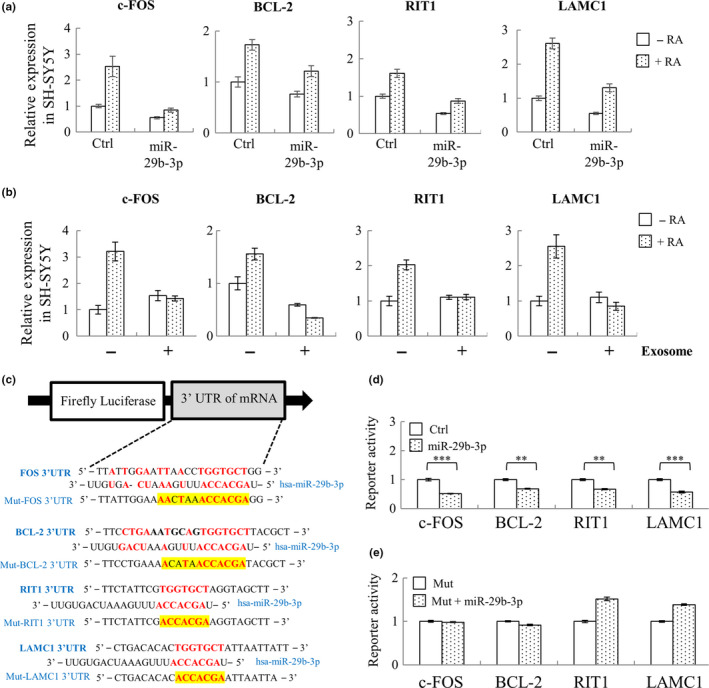Figure 3.

miR‐29b‐3p directly targets neuronal‐related genes c‐FOS, BCL‐2, RIT1, and LAMC1. (a) SH‐SY5Y cells were transiently transduced with lentivirus carrying control or pLenti4‐CMV/TO‐miR‐29b‐3p vector. 48 hr after transduction, SH‐SY5Y cells were treated with 10 μM RA for another 72 hr, followed by total RNA isolation and RT‐qPCR quantification of c‐FOS, BCL‐2, RIT1, and LAMC1. (b) SH‐SY5Y cells were treated with exosome for 24 hr and then induced for differentiation with 10 μM RA for 72 another hours. RNA from RA‐differentiated SH‐SY5Y cells co‐cultured with or without long‐term differentiated C2C12 myotube‐derived exosomes was purified, followed by quantification of c‐FOS, BCL‐2, RIT1, and LAMC1 using RT‐qPCR. (c) Structure of the luciferase reporter construct and the predicted miR‐29b‐3p binding site on the 3’UTR of c‐FOS, BCL‐2, RIT1, and LAMC1. (d and e) The luciferase reporter plasmids containing either miR‐29b‐3p binding site (d) or miR‐29b‐3p binding‐deficient mutant (Mut) (e) were co‐transfected with miR‐29b‐3p expression construct into 293T cells. Luciferase reporter assay results showing that c‐FOS, BCL‐2, RIT1, and LAMC1 were direct targets of miR‐29b‐3p. Error bars show mean ± SD (n = 3). **p < .01, ***p < .001 by Student's t test
